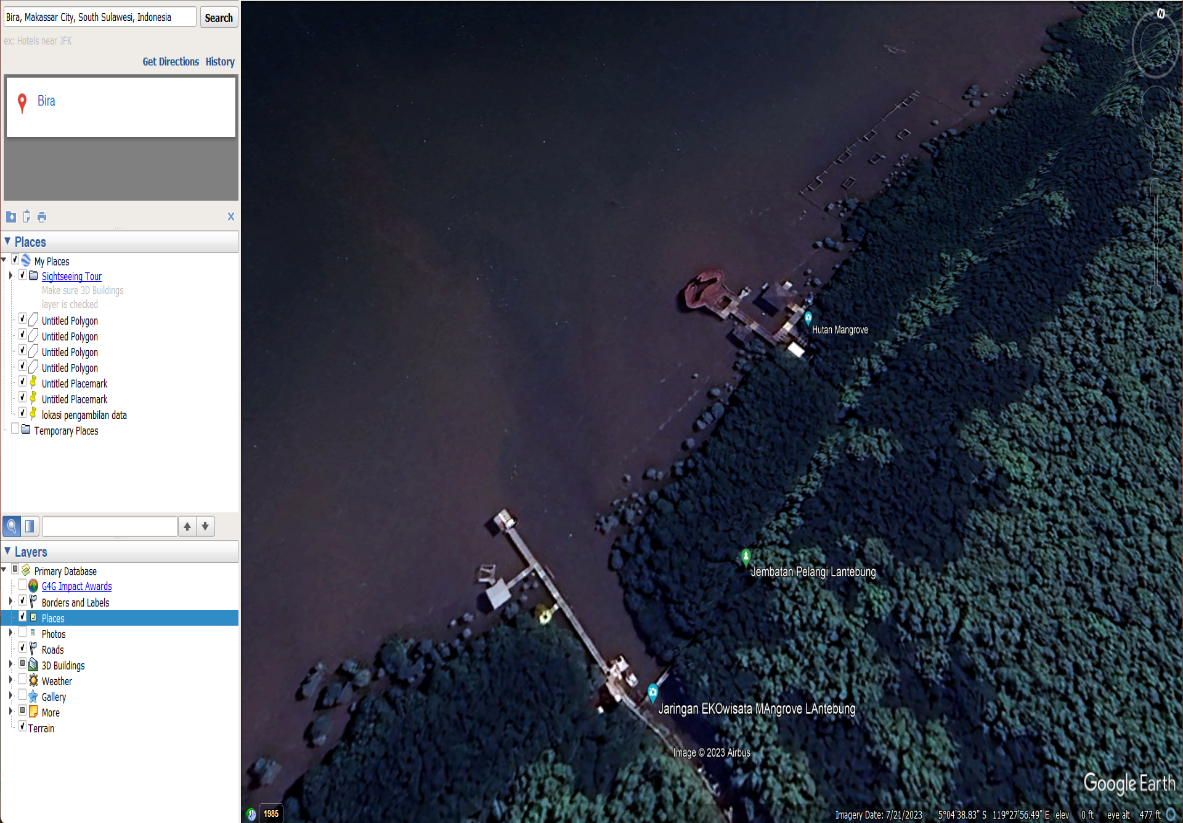APPLICATION OF GEOGRAPHICAL INFORMATION SYSTEMS IN MAINTAINING COASTAL MORPHOLOGY IN BIRA VILLAGE AS AN EMPLOYMENT OF THE 14TH SDGs
Main Article Content
Abstract
The application of a Geographic Information System (GIS) in maintaining coastal morphology in Bira Village is an important step in supporting the achievement of the 14th Sustainable Development Goals (SDGs), which relate to preserving marine and coastal ecosystems. Bira Village, located in Makassar, South Sulawesi, is a clear example of implementing SDGs, especially Goal 14, which focuses on marine ecosystems. The mangrove forest in Bira Village has great potential, providing economic benefits through agriculture, aquaculture and tourism. However, the sustainability of this ecosystem from generation to generation is the key to preserving it. This research aims to identify, maintain and preserve the potential of mangrove forests as part of the SDGs. The research results provide an understanding of mangrove forests, their location, ecosystem benefits, and ways to preserve them. Preserving the mangrove ecosystem requires public awareness, stopping illegal clearing, restoration, sustainable management, pollution control and wildlife protection. Apart from that, the development of sustainable ecotourism is also needed to increase awareness and support conservation. The application of GIS in maintaining coastal morphology in Bira Village helps maintain environmental balance and provides long-term economic benefits for coastal communities. This initiative can be an example for other regions in efforts to preserve coastal and marine ecosystems which are important for maintaining the sustainability of the planet.
Downloads
Article Details
References
Rahadian A.H. 2016. “Strategi Pembangunan Berkelanjutan”, Jurnal Stiami Vol III No 01, Insitut Ilmu Sosial dan Manajemen Stiami.
Takarendehang R., Sondak C.F.G., Kaligis E., Kumampung D., Manembu I.S., Rembet U.N.W.J. 2018. “Kondisi Ekologi dan Nilai Manfaat Hutan Mangrove Di Desa Lansa, Kecamatan Wori, Kabupaten Minahasa Utara”. Jurnal Pesisir dan Laut Tropis. 2(1): 45-52.
Ilhami M.S.R.N. 2022. “Pengembangan Ekowisata Hutan Mangrove Lantebung Di Kelurahan Bira Kecamatan Tamalanrea Kota Makassar Provinsi Sulawesi Selatan” Institut Pemerintahan Dalam Negri.
Salim Emil. 2018. Tujuan Pembangunan Berkelanjutan di Indonesia. Unpad Press Grha Kndaga: Bandug.
Soedarmo S.P.K. 2018. Pelestarian Hutan Mangrove dan Peran Serta Masyarakat Pesisir. Undip Press:
Semarang.
Nanlohy L.H., Masniar M. 2020. “Manfaat Ekosistem Mangrove Dalam Meningkatkan Kualitas Lingkungan
Masyarakat Pesisir”. Journal of Community Service 2(1): 1-4.
A. Alaudin, I. Zakiya, B. Burhanis, R. A. Munandar, and M. Kadhafi, “The Use Of Remote Sensing In Mapping The Distribution Of Chlorophyl In Belawan Waters”, zonalaut, vol. 5, no. 1, pp. 23-27, Mar. 2024.
A. Fadillah and F. Maulana, “Analysis Of The Application Of Renewable Energy At The Muara Angke Passenger Port As A Means Of Supporting Thousand Island Tourism”, zonalaut, vol. 5, no. 1, pp. 7-14, Mar. 2024.

